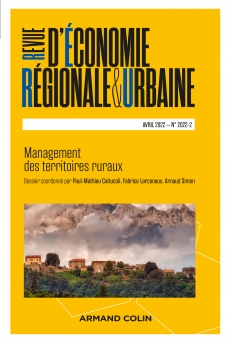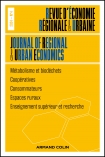
REVUE D'ÉCONOMIE RÉGIONALE ET URBAINE (2/2022)
Pour acheter ce numéro, contactez-nous
Recevez les numéros de l'année en cours et accédez à l'intégralité des articles en ligne.
Cet article, qui repose sur une enquête de plusieurs mois conduite entre janvier et novembre 2019, vise à interroger la capacité des acteurs locaux à redynamiser un espace rural en déclin à partir d’une stratégie de développement territorial endogène. Le cas étudié est celui de l’expérimentation Territoires zéro chômeur de longue durée à Prémery (Nièvre), petite ville rurale marquée aux débuts des années 2000 par la fermeture de l’usine Lambiotte, principal employeur du territoire. Si le projet s’apparente à première vue à un dispositif classique d’insertion, sa mise en place a entrainé une reconfiguration de la gouvernance locale autour de la mise en oeuvre d’un projet de développement territorial partagé.
The results presented in this article are drawn from a field survey conducted in the canton of Prémery between January and November 2019. It is based mainly on the conduct and analysis of semi-directive interviews, supplemented by additional data contextualisation and validation tools (documentary research, work on archives and mobilisation of framework data from official statistics). It aims to question the capacity of local actors to revitalise a declining rural area on the basis of an endogenous territorial development strategy. The case studied is that of the experiment Territoires zéro chômeur de longue durée in Prémery (Nièvre), a small rural town marked at the beginning of the 2000s by the closure of the Lambiotte factory, which was the main source of employment in the area. Although at first glance the project appears to be a classic integration scheme along the lines of those imagined since the 1970s by associations fighting against job insecurity, the TZCLD program actually has several original features. It is financed by a specific fund coming mainly from the state and aims to reduce long-term unemployment by taking into account both the needs of the territories and the skills of the beneficiaries. The effective implementation of this program led to a reconfiguration of local governance by including new actors such as inhabitants, unemployed, associations, entrepreneurs, administrative staff, elected representatives.

